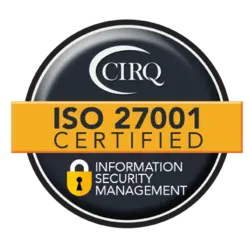Concept Testing Methods for Market Research
Concept testing provides valuable insights into market readiness and consumer behavior
Inside this Article…
You might also like…
When to Let AI Moderate Your Research—and When Not To
AI moderation can be a great way to improve efficiency of your qualitative research. Learn more below. By: Bart Barkosky Date: September 12, 2025...
Closing the Creativity Gap in Research Technology: How AI Enhances Surveys, Diaries, and Interviews
Learn how AI can help boost the creativity of your research technology and earn you better responses. By: OvationMR Research Team Date: September...
Using AI in Qualitative Research: Best Practices, Tools, and Real-World Examples
There are many different market research conferences to pick and choose from in any given calendar month. What are the pros and cons of so many options?...
The Market Research Conference Circuit: Benefits & Challenges of a Crowded Calendar
There are many different market research conferences to pick and choose from in any given calendar month. What are the pros and cons of so many options?...
Introduction to Concept Testing Surveys
American academic, Harvard Business School professor and recognized business consultant Clayton Christensen noted that 30,000 products are launched into the market every year. He also noted that out of these, almost 95% fail to capture the consumer market.

It’s not only new businesses and market entrants that fail to play their marketing gambit. Industry goliaths have not been spared either. In the 1980s, Colgate, a brand known for its oral hygiene products, decided to diversify its offering by launching frozen, ready-made meals. Enter Colgate Kitchen Entrees. However, the association of the Colgate brand name with toothpaste was impossible to shake off. Since minty-fresh frozen lasagna doesn’t really stimulate the appetite, the product failed to generate the results the brand’s marketing team desired.
If the brand had invested time and resources to test their concept in the early stages of the development process before launch, they wouldn’t be on lists of failed product launches and brand blunders today .
By examining market research mistakes made in the past, companies today need to make sure that their products are actually something their customers want. Here, concept testing surveys prove their effectiveness.

What is a Concept Test
In simple words, product concept testing is a marketing research method brands employ to gauge their target customers’ readiness and willingness for a concept or idea before its launch. Concept testing involves both quantitative and qualitative methods to determine how their intended target market will react to an idea when presented in the form of a product.
The principal benefits of concept testing are it enables brands to get an unbiased perspective for their concepts and save time and money by simulating a test market producing actionable insights. Any marketer with an idea will have a bias, wrongly assuming every new idea will be a successful product or feature concept will succeed in the market. This seldom happens in practical applications as many products fail every year.
Besides testing the product idea’s market potential, concept testing allows marketers to dig deeper into the concept’s micro-aspects. From aesthetics and particular features to pricing, you can redesign, amplify, or eliminate certain product aspects.

Methods of Concept Testing
Concept testing probes into the consumer’s mind through online concept test surveys and online focus groups adapted for the purpose they will be used for. There are multiple approaches researchers can take when test driving their product ideas before pushing them from product development onto a busy motorway.

1. Single-Concept Evaluation
The name is pretty clear on what this approach to concept testing involves. A group of respondents or participants are first presented with a single concept evaluation in its entirety. The concept testers are presented with an in-depth review of the product idea and its features and functions.
Afterward, respondents are asked to fill out a survey where they evaluate the concept, answering a series of questions that gauge whether the concept appealed to them or not. This method is quick, unbiased, and offers a high response rate.
2. Comparison Testing
Unlike single-concept evaluations, comparison testing involve the testing of two or more ideas. Participants are given a breakdown of multiple concepts together and then answer ranking questions to compare both concepts and choose one that managed to sway them. Researchers can form inferences based on the respondents’ answers, determining which concept proved to be more widely accepted.
However, there is a slight lack of context in Comparison Testing. Even though respondents note which concept they liked more, there is no explanation as to why they chose one particular concept over the others. Consequently, there is little to no constructive criticism for concepts they didn’t show interest in.
3. Monadic Testing
Monadic testing is another take on multiple-concept evaluation. It deviates from the latter in how the participant audience is approached. In Monadic testing, participants are divided into several groups, depending on how many concepts need to be evaluated.
Each group is presented with a different concept in isolation, allowing the respondents to hyper-analyze the concept in depth. Researchers can ask follow-up questions about the product idea to determine what they liked and why.
In contrast to comparison testing, monadic testing adds context to the respondents’ choices. Results are much more thorough, giving researchers a better idea of what aspects each group liked and disliked.
Monadic tests can be a relatively more costly endeavor, considering that it requires a large sample size. The more concepts you have to test and evaluate, the more participants you will need to form the focus groups.
4. Sequential Monadic Concept Testing
Sequential monadic tests are similar to multiple-concept evaluations as they involve presenting all concepts to the respondents in a randomized order. However, the target audience is split into multiple groups.
This type of concept testing doesn’t really require a large group of respondents, making it much easier to field and less expensive to conduct. However, it has a few limitations. For instance, since each group is presented with all concepts, the questionnaires are relatively lengthy. This may lead to a low completion rate, creating a non-response bias that skews the results.
5. Proto monadic Concept Testing
When a comparison test follows a sequential monadic test, it’s referred to as proto monadic testing. Respondent groups are first given an in-depth reveal of each concept to evaluate each concept in its entirety. The succeeding comparison test then enables the respondents to reveal which concept they prefer over the others.
The results of the latter play a significant role in verifying the results of the sequential monadic test. Whichever concept the participants prefer will likely have more positive feedback in the sequential nomadic test.

Creating Concept Tests
Whether conducted via an online survey or in person, concept tests should include questions that probe the audience to discover how they feel about the idea being presented to them. The insights gained from these tests are indispensable for brands seeking to introduce products or services their target audience will be willing to buy.
Clear Objectives are Necessary
The importance of setting goals has now been repeated to the point of cliché. Not having a clear objective for your market research is a major no-no. When researchers don’t know exactly what they want to get out of their concept tests, they won’t agree on what direction the test should take.
Use Survey Blocks
To prevent the test results from being skewed by biases, make sure the questions follow a consistent structure. Survey blocks are great for grouping related questions in one section. For instance, when survey programming you can create survey blocks for each aspect or feature of the product concept.
This way, respondents can focus on each area separately and then move on to the next instead of going back and forth. This way, you generate more accurate feedback.
You can further simplify the survey results by using the Likert scale in your survey to quantify your respondents’ opinions. You can choose between a five, seven, or nine-point scale that allows respondents to make choices based on how much they agree or disagree with the statement or question.
Consider you are concept testing a new type of face cream. Your survey may include a question such as “the packaging concept of the product makes it easy to travel with.” Respondents can choose an option on a symmetric agree-disagree Likert scale, with 1 being “strongly agree” and 5 being “strongly disagree.”
After consolidating the survey results, you can determine the average opinion on the product’s packaging and its transportability.
Visual Representation of the Concept
While detailed descriptions suffice, adding an image, video, or digital rendition of the product prototype will only help you convey your concept with more accuracy. For instance, consider that you’re changing your existing products’ packaging. You can’t convey the new concept’s aesthetics if a wordy description is all you have. Instead, you will have much better success with an image or drawing of the new design.
Don’t Forget Demographic Questions
Demographic survey questions are integral to market research. In concept testing, demographic details help determine whether the respondents match your target audience or market. Discrepancies between the two can result in skewed results, rendering the survey ineffective in fulfilling the goal of the survey.
Unprecedented changes in consumer behaviors and preferences, especially those influenced by recent disruptions in the global economy, necessitate intensive market research. Concept testing is a vital tool in your kit that can simplify product development strategies, allowing you to make changes in your concepts that are sure to generate favorable results when you launch the product.
When you understand what works with your target market and what doesn’t, you’ll be in a better position to offer products your customers love.
Follow
OvationMR

Jim Whaley
Author
Jim Whaley is a business leader, market research expert, and writer. He posts frequently on The Standard Ovation and other industry blogs.
OvationMR is a global provider of first-party data for those seeking solutions that require information for informed business decisions.
OvationMR is a leader in delivering insights and reliable results across a variety of industry sectors around the globe consistently for market research professionals and management consultants.
Expert help with market research...
We are ready to offer you...
A Project Estimate or Proposal
License EthOS Research Hub

Need help with new insights?
We are ready to offer you:




